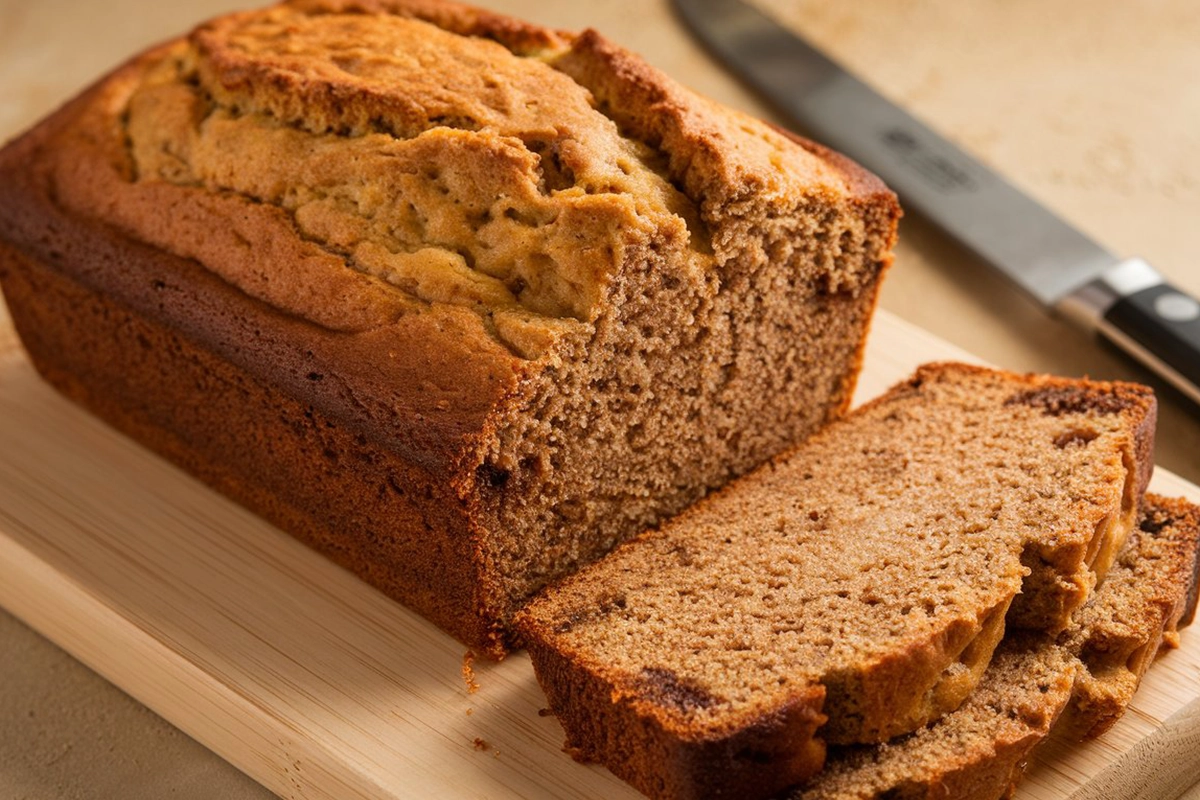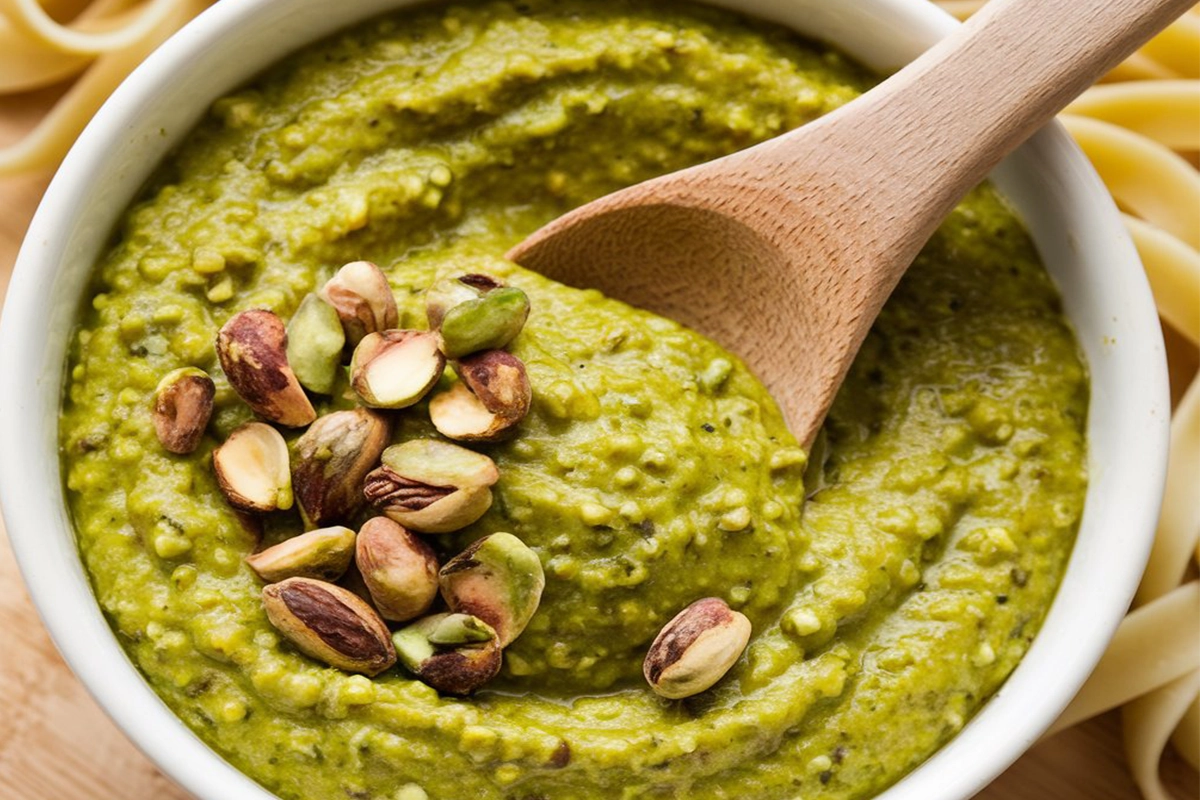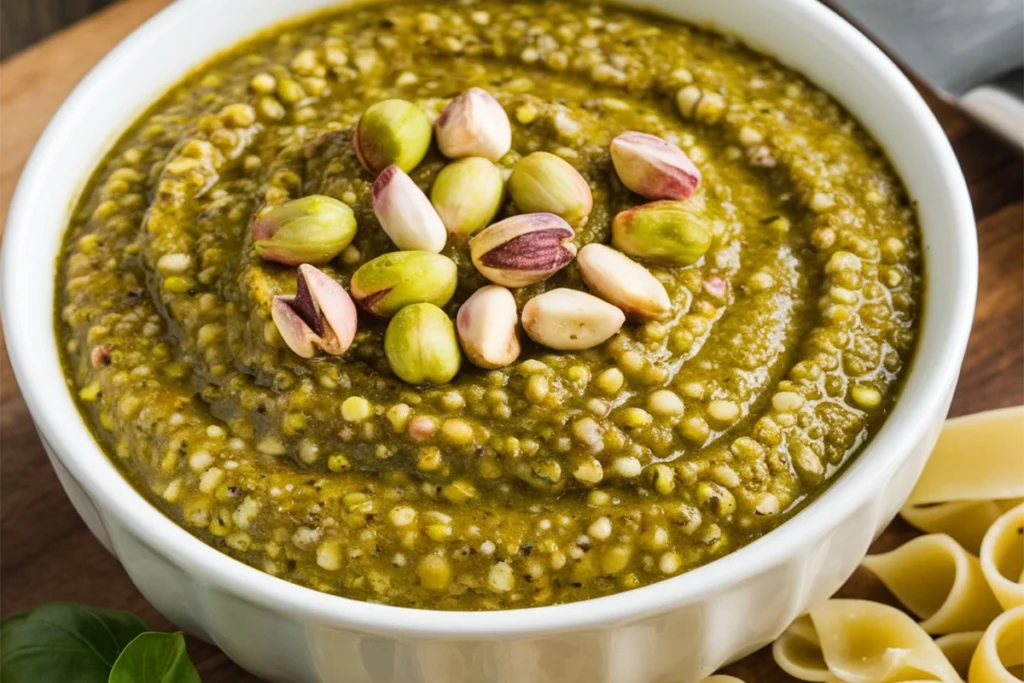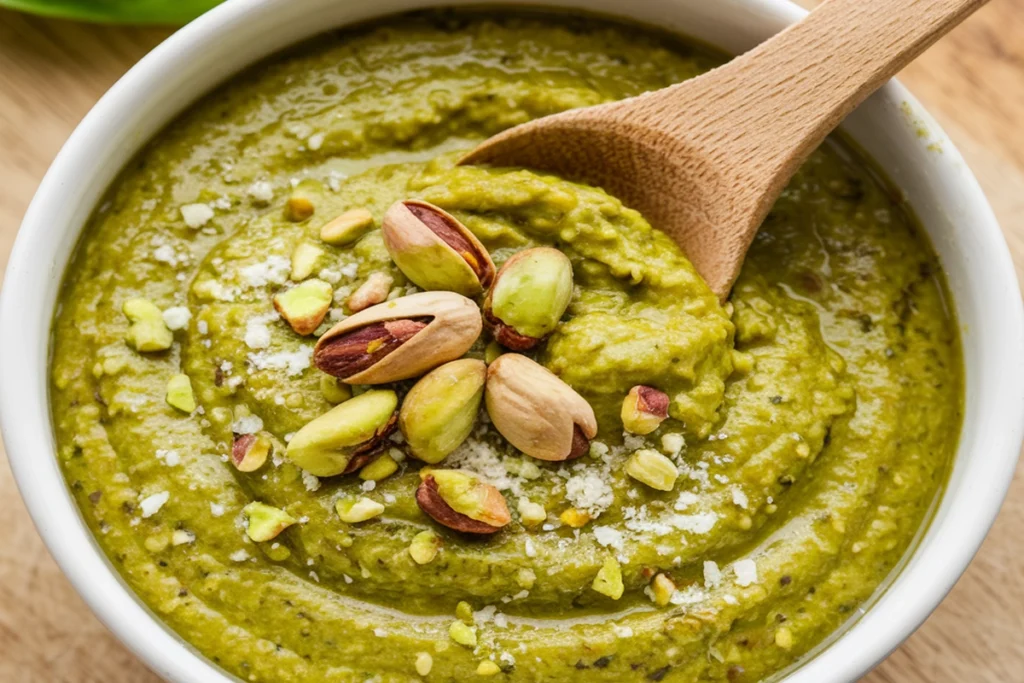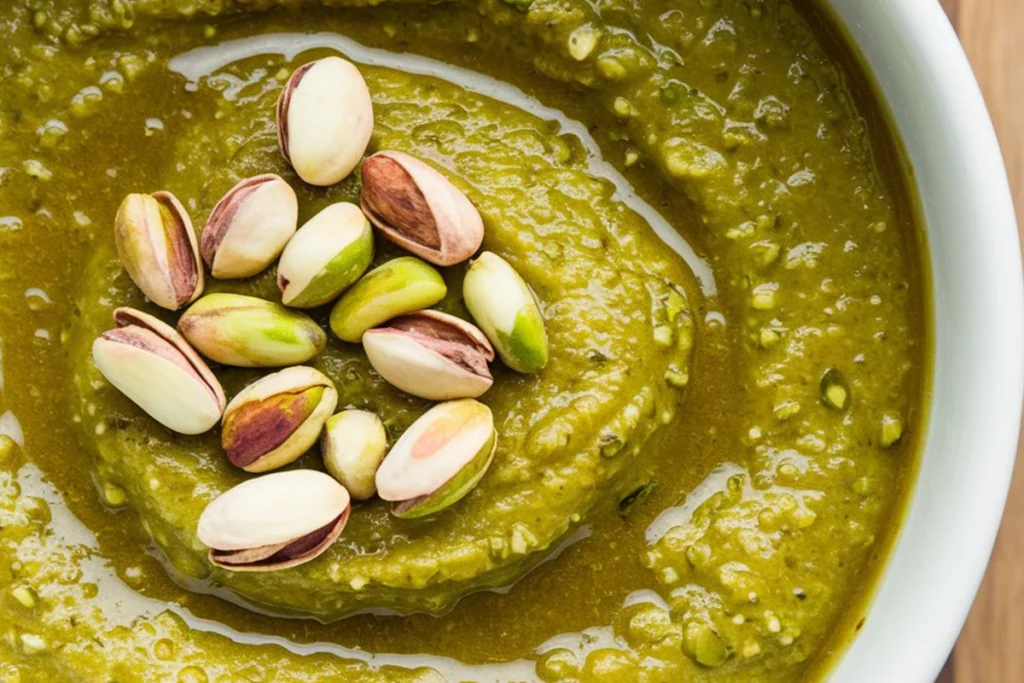Banana Bread Recipe with Cake Mix

Introduction
If you’re craving homemade banana bread but don’t want the hassle of measuring out a dozen ingredients, then this banana bread recipe with cake mix is for you! Using a boxed cake mix makes the process super simple while still delivering a moist, delicious loaf full of banana goodness.
This recipe is perfect for busy bakers, beginners, or anyone looking for a quick way to use up overripe bananas. Plus, with a few tweaks, you can customize the flavors to your liking! Let’s get started.
Why Use Cake Mix for Banana Bread?
Benefits of Using Cake Mix
Using cake mix as a base for banana bread offers several advantages:
- Saves Time: No need to measure out flour, sugar, baking powder, or salt—everything is already in the mix!
- Foolproof Results: Cake mix ensures a consistent outcome every time. No worries about incorrect flour ratios!
- Fewer Ingredients: You only need a few additional items, like eggs and bananas, making this recipe super easy.
- Versatile Flavor: You can choose different cake mix flavors to experiment with taste—vanilla, spice, or even chocolate!
Taste and Texture Differences
Banana bread made with cake mix is typically:
- Softer & More Moist due to the pre-measured cake mix ingredients.
- Slightly Sweeter than traditional banana bread since cake mix contains sugar.
- Fluffier & Lighter compared to the denser homemade versions.
If you love classic banana bread but don’t want the extra effort, this version is a fantastic alternative!
Step-by-Step Guide to Making Banana Bread with Cake Mix
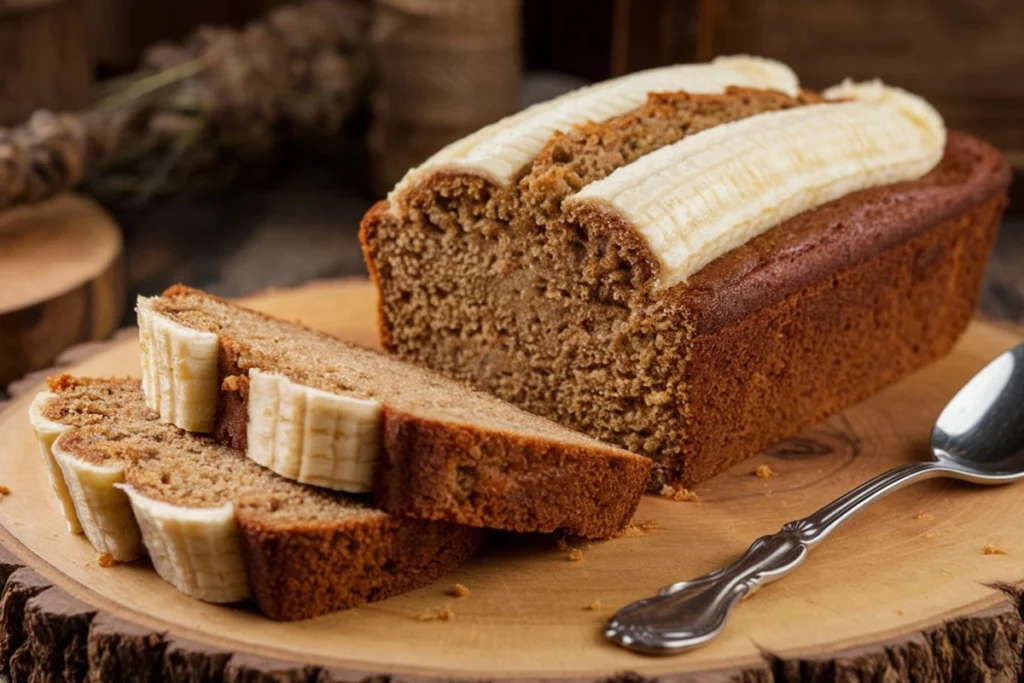
Making banana bread with cake mix is as easy as it gets! Just a few ingredients, a bowl, and an oven—you’ll have a delicious loaf ready in no time.
Ingredients Needed
For this simple recipe, you’ll need:
- 1 box of cake mix (yellow, vanilla, or spice flavor work best)
- 3 ripe bananas, mashed
- 2 large eggs
- ½ cup vegetable oil (or melted butter for extra richness)
- 1 teaspoon vanilla extract (optional, but enhances flavor)
- ½ teaspoon cinnamon (optional, for extra warmth)
- ¼ cup milk (optional, if batter feels too thick)
Pro Tip: The riper the bananas, the sweeter and more flavorful your bread will be!
Equipment Required
- Mixing bowl
- Whisk or electric mixer
- Measuring cups and spoons
- Loaf pan (9×5 inches)
- Non-stick spray or parchment paper
- Cooling rack
Preparation Steps
Follow these easy steps:
1️⃣ Preheat the oven to 350°F (175°C). Grease your loaf pan or line it with parchment paper.
2️⃣ Mash the bananas in a large bowl until smooth. A few small lumps are okay!
3️⃣ Add eggs, oil, and vanilla extract to the mashed bananas. Whisk until well combined.
4️⃣ Slowly mix in the cake mix and cinnamon. Stir gently until just combined—don’t overmix!
5️⃣ Pour the batter into the prepared loaf pan and smooth the top.
6️⃣ Bake for 40–45 minutes, or until a toothpick inserted in the center comes out clean.
7️⃣ Cool for 10 minutes in the pan, then transfer to a wire rack to cool completely.
Baking Tips and Tricks
✅ Don’t overmix the batter—it can make the bread dense and chewy.
✅ Cover with foil if the top browns too quickly—this prevents burning.
✅ Let it cool before slicing—this helps it firm up and avoids crumbling.
Variations and Add-Ins for Extra Flavor
One of the best things about banana bread with cake mix is how easily you can customize it! Whether you love chocolate, nuts, or something fruity, there are endless possibilities.
Flavor Variations
If you want to switch things up, try using different cake mix flavors:
- Spice Cake Mix – Adds a warm, cinnamon-spiced flavor, perfect for fall! 🍂
- Chocolate Cake Mix – Turns your banana bread into a banana-chocolate delight. 🍫
- Butter Pecan Cake Mix – Gives a rich, nutty taste. 🥜
- Strawberry Cake Mix – A fruity twist for a fun, pink-colored banana bread! 🍓
Popular Add-Ins
Want to take your banana bread up a notch? Mix in some of these delicious ingredients:
- Chocolate Chips – For a melty, sweet touch. (¼ to ½ cup)
- Chopped Nuts – Walnuts or pecans add a crunchy contrast. (¼ cup)
- Dried Fruits – Raisins, cranberries, or shredded coconut for extra texture.
- Peanut Butter Swirl – Add a few spoonfuls of peanut butter and swirl it into the batter.
- Cream Cheese Filling – Create a creamy layer in the middle by adding a sweetened cream cheese mixture.
Pro Tip: To prevent mix-ins from sinking, toss them in a bit of dry cake mix before folding them into the batter.
Frequently Asked Questions (FAQs)
Can I Use a Cake Mix for Banana Bread?
Absolutely! Cake mix makes banana bread super easy to prepare. Since it already contains flour, sugar, and leavening agents, you just need to add a few ingredients like bananas, eggs, and oil to create a moist and flavorful loaf.
How to Make Banana Cake with 3 Ingredients?
If you’re looking for an ultra-simple banana cake, you only need:
- 1 box of cake mix (yellow, vanilla, or spice)
- 3 ripe bananas, mashed
- 2 eggs
Instructions:
- Preheat oven to 350°F (175°C).
- Mix all ingredients until smooth.
- Pour into a greased loaf pan or cake pan.
- Bake for 30–40 minutes, or until a toothpick inserted in the center comes out clean.
That’s it—banana cake in the easiest way possible!
Can I Add Bananas to a Box Cake Mix?
Yes! Adding mashed bananas to a box cake mix makes it richer, more moist, and naturally sweet. However, since bananas add extra moisture, you might need to slightly reduce the amount of oil or water in the original cake recipe.
Tip: For a fluffier cake, add one extra egg when using bananas in a box cake mix!
What Is the Number One Mistake Made When Making Banana Bread?
The most common mistake? Overmixing the batter!
Why is this bad?
- Overmixing develops too much gluten, making the bread dense and tough instead of light and moist.
- The best method? Gently stir the ingredients until just combined—a few lumps in the batter are totally fine!
Other common mistakes:
- Using unripe bananas → The riper, the better!
- Not measuring ingredients properly → Too much banana can make the bread soggy.
- Overbaking → Check at 35 minutes to prevent dryness.
Nutritional Information
If you’re wondering about the calories and nutrients in banana bread with cake mix, here’s a general breakdown per slice (assuming 10 slices per loaf).
Caloric Content (Per Slice)
- Calories: ~180–220 kcal
- Carbohydrates: ~30g
- Sugar: ~15g
- Protein: ~2–3g
- Fat: ~6–8g
Macronutrient Breakdown
- Carbs – Mainly from the cake mix and bananas, giving energy.
- Protein – Small amounts from eggs.
- Fats – From oil or butter, contributing to moistness.
Keep in Mind:
- Using spice cake mix may add extra sugar and carbs.
- Swapping oil for applesauce can reduce fat but still keep it moist.
- Adding nuts or chocolate chips will increase calories and fats.
For a healthier version, try:
✅ Using a sugar-free cake mix
✅ Replacing oil with Greek yogurt or mashed avocado
✅ Adding chia seeds or flaxseeds for extra fiber
Storing and Freezing Banana Bread
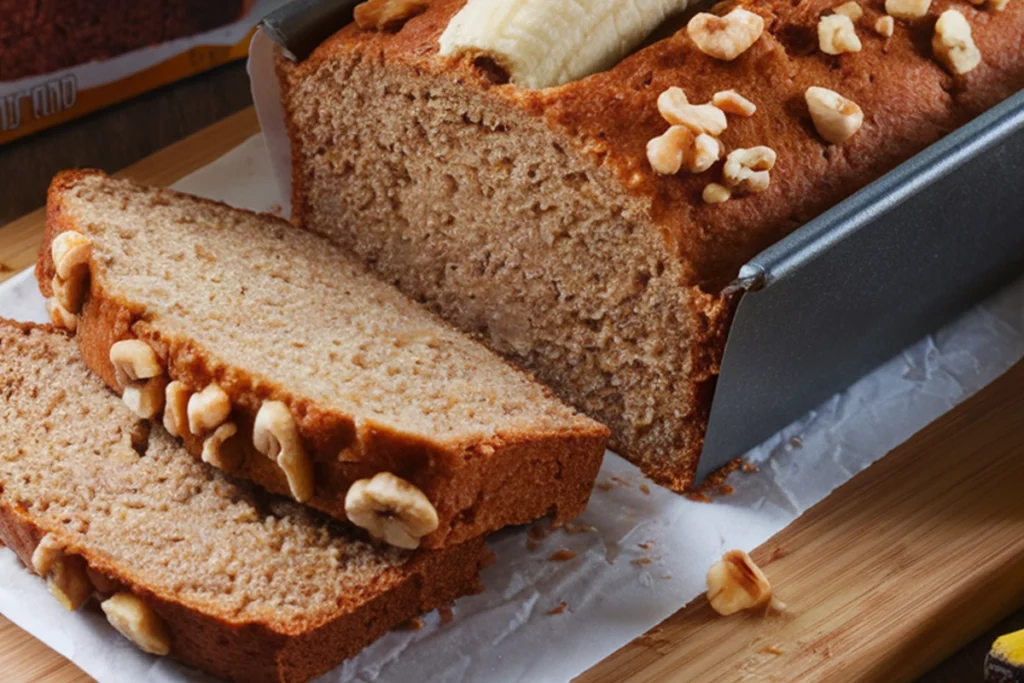
Nothing beats warm, freshly baked banana bread, but if you have leftovers, you’ll want to keep them moist and delicious for as long as possible. Here’s how!
Short-Term Storage (1–3 Days)
For room temperature storage:
- Wrap the banana bread tightly in plastic wrap or aluminum foil.
- Store it in an airtight container to prevent drying out.
- Keep it in a cool, dry place (not near a heat source).
Shelf Life: Up to 3 days at room temperature.
Refrigerating for Longer Freshness (Up to 1 Week)
If you need to store banana bread for more than a few days:
- Wrap it in plastic wrap to lock in moisture.
- Place it in a sealed container or a resealable bag.
- Store in the fridge for up to 7 days.
Pro Tip: Before eating, let refrigerated banana bread sit at room temperature for 10–15 minutes or warm it in the microwave for a few seconds to soften.
Freezing Banana Bread (Up to 3 Months)
For long-term storage, freezing is the best option!
How to freeze a whole loaf:
1️⃣ Let the banana bread cool completely before freezing.
2️⃣ Wrap it tightly in plastic wrap and then in aluminum foil.
3️⃣ Place in a freezer-safe bag and remove as much air as possible.
How to freeze slices for easy snacking:
1️⃣ Slice the banana bread before freezing.
2️⃣ Wrap each slice in plastic wrap and store in a freezer bag.
3️⃣ Grab a slice whenever you want—no need to thaw the whole loaf!
How to thaw:
- Let the whole loaf thaw at room temperature for 2–3 hours.
- For slices, microwave for 20–30 seconds for a quick warm-up.
Serving Suggestions
Banana bread is delicious on its own, but you can elevate it with tasty toppings, pairings, and creative serving ideas!
Best Toppings for Banana Bread
Add extra flavor and texture with these mouthwatering toppings:
- Butter & Honey – A classic combo that enhances the bread’s natural sweetness.
- Peanut Butter or Almond Butter – For a protein-packed treat.
- Cream Cheese Spread – Adds a tangy contrast to the sweetness.
- Chocolate or Caramel Drizzle – A decadent upgrade!
- Fresh Berries – Strawberries, raspberries, or blueberries add a refreshing touch.
Best Drinks to Pair with Banana Bread
- Coffee or Espresso – The rich, bold flavors complement the sweetness perfectly. ☕
- Milk – A cold glass of milk is a nostalgic pairing that never fails. 🥛
- Chai Tea or Spiced Latte – The warm spices enhance the banana flavor.
- Vanilla or Chocolate Protein Shake – A great post-workout snack!
Fun Ways to Serve Banana Bread
- Toasted with Butter – Warm up a slice in a pan for crispy edges.
- French Toast Style – Dip in an egg mixture and fry for a delicious twist.
- Ice Cream Sandwich – Use banana bread slices instead of cookies!
- Layered Dessert – Crumble it into yogurt or pudding for a parfait.
Pro Tip: Stale banana bread? Revive it by toasting and adding a drizzle of honey or jam!
Reader Experiences and Troubleshooting Tips
Even the easiest recipes can go wrong sometimes! Here are some common issues people face when making bread with cake mix—and how to fix them.
User-Submitted Variations
Many home bakers have experimented with this recipe and shared their creative twists:
- “I used spice cake mix and added chopped walnuts—tasted like fall in a loaf!”
- “I swapped oil for Greek yogurt, and it made the bread super moist!”
- “Tried chocolate cake mix with peanut butter chips—absolute game changer!”
Tip: Don’t be afraid to experiment with flavors and ingredients. This recipe is super flexible!
Troubleshooting Common Issues
Banana Bread is Too Dense
Fix: Make sure not to overmix the batter—stir until just combined!
Soggy or Undercooked in the Middle
Fix: Bake a little longer and check doneness by inserting a toothpick—it should come out clean. If the top is browning too fast, cover it with foil.
Banana Bread is Dry
Fix: Use very ripe bananas and don’t overbake. Adding a splash of milk or sour cream to the batter can also help.
Bananas Didn’t Mix Evenly
Fix: Mash the bananas completely before adding them to the batter. Small lumps are okay, but large chunks might not bake evenly.
The Bread Stuck to the Pan
Fix: Grease your pan well or use parchment paper for easy removal.
Conclusion
Making bread banana with cake mix is a quick, easy, and delicious way to enjoy homemade banana bread without all the fuss. Whether you’re a beginner or an experienced baker, this shortcut recipe guarantees a moist, flavorful loaf every time!
With so many customization options—from different cake mix flavors to fun add-ins like chocolate chips and nuts—you can make this banana bread uniquely yours. Plus, storing and freezing it is simple, so you can always have a slice ready when cravings hit!
Key Takeaways:
✅ Cake mix makes banana bread easy and foolproof.
✅ Ripe bananas are key for natural sweetness and moisture.
✅ Don’t overmix the batter—this keeps it light and fluffy.
✅ Customize it with mix-ins like nuts, chocolate, or spices.
✅ Store properly to keep it fresh—or freeze for later!
Your Turn!
Have you tried making banana bread with cake mix? What are your favorite variations or add-ins? Share your thoughts in the comments below!

